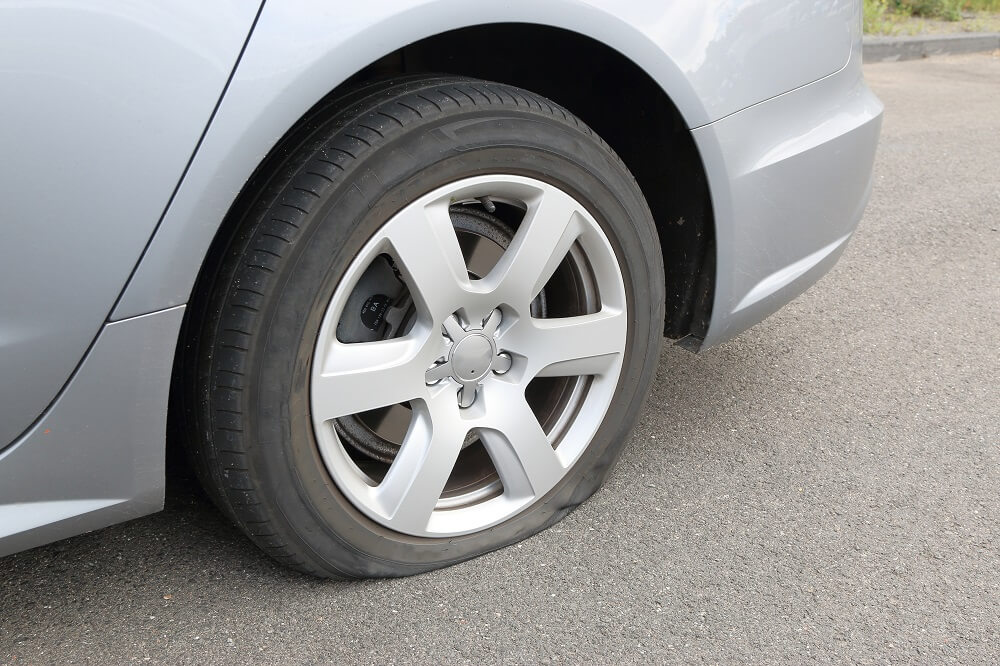 If you’ve been driving around Brockton, Randolph, and Stoughton, MA, you may have run into a flat tire or two. Especially during the winter months, when potholes wreak havoc on the local roadways, your tires may experience wear and tear.
If you’ve been driving around Brockton, Randolph, and Stoughton, MA, you may have run into a flat tire or two. Especially during the winter months, when potholes wreak havoc on the local roadways, your tires may experience wear and tear.
Fortunately, whether you’ve run into a flat now or you just want to be prepared in case you do at some point, our team has you covered with all the information you need. Check out this guide, which covers how to change your vehicle’s flat tire, and make sure to contact us here at Collision 24 with any questions you may have!
Is My Tire Flat?
 Of course, if you need to change a tire, you have run into a flat. When you do, it will be quite obvious, as your tire will be greatly deflated.
Of course, if you need to change a tire, you have run into a flat. When you do, it will be quite obvious, as your tire will be greatly deflated.
How does a flat occur, though? Well, normally, a flat happens when you drive over something that punctures a hole in the rubber wall of the tire. Usual suspects include nails, screws, and glass, especially if you’ve been driving around a job site or on a road with debris.
Changing a Flat
Most cars come with a spare tire, either full size or temporary, which will allow you to get back up and running if you encounter a flat on the roadways.
If you do encounter a flat, the first thing you will want to do is pull over to the side of the road, park, and put your parking brake and hazard lights on. This will put you in a safer position to change your tire. From there, you should be ready to change the tire out, following these steps:
 If your vehicle has hub caps, you will first want to pry it off the flat. This will allow you to access the lug nuts.
If your vehicle has hub caps, you will first want to pry it off the flat. This will allow you to access the lug nuts.- Using a lug wrench, you will then need to turn the lug nuts counterclockwise until they become loose. Once you get them to about a ¼ or ½ a turn away from coming off, stop loosening, as you do not want them to come off completely, yet.
- Next, you will need to use your jack to raise the vehicle off the ground. Placing a piece of wood under the jack can help keep it steady. If you have tire wedges, putting them in place can help keep the car in place, too. To complete the change, you will want the flat tire raised six inches off the ground.
- From there, you will want to unscrew the lug nuts the rest of the way, then remove the flat tire from the vehicle.
- With your new tire in hand, you will want to mount it to the lug bolts, and then screw the lug nuts back in to secure the new tire in place.
- Heading towards completion, you will next need to lower the vehicle so that the new tire is flush with the ground, but the entire weight of the vehicle is not yet on the tire. Tighten the lug nuts again.
- Then, lower the vehicle completely, and make sure lug nuts are tight one more time.
- To make sure you are ready to go, check your tire pressure using a gauge or the tire pressure monitoring system within your vehicle.
Just like that, your flat will be changed.
Calling for a Tow
 Of course, if you don’t have a spare tire or are missing equipment, you won’t be able to complete a change. If this is the case or you would be more comfortable with our team completing your change, we’ll be happy to help. Give us a call to set up a tow, so we can get your vehicle in the shop and replace its tire.
Of course, if you don’t have a spare tire or are missing equipment, you won’t be able to complete a change. If this is the case or you would be more comfortable with our team completing your change, we’ll be happy to help. Give us a call to set up a tow, so we can get your vehicle in the shop and replace its tire.
Have Questions About How to Change Your Vehicle’s Flat Tire?
Ready to change a tire after checking out this guide on how to change your vehicle’s flat tire? Still have some questions? Wherever you are at, we’ll be happy to help. Just contact our team here at Collision 24.
We’re proud to serve Brockton, Randolph, and Stoughton, Massachusetts, drivers, and hope to assist you soon!
